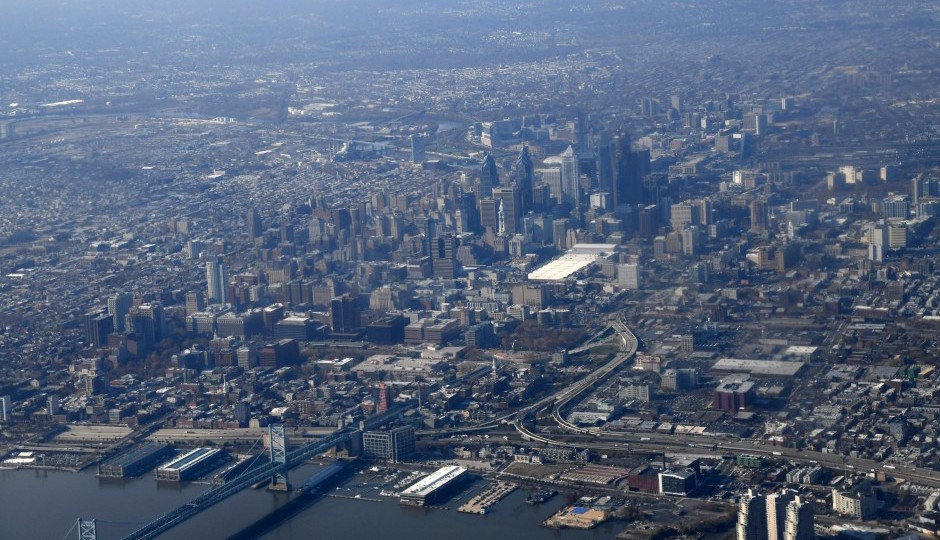Just How Much Does Philly Trade With Mexico?

The Downtown Philadelphia skyline, Delaware River and the Benjamin Franklin bridge. (USA Today Sports)
It’s not far-fetched to say that the U.S. may soon wage a trade war with Mexico. When President Trump made his way to Philly for the Republican retreat last month, news broke that the administration was considering, among other ideas, a 20 percent tax on imports from Mexico to pay for a border wall that could cost as much as $15 billion.
The economic fallout would be huge for the Greater Philadelphia region, Linda Conlin, president of the World Trade Center of Greater Philadelphia (WTCGP) told Philadelphia magazine.
“If you put a tax on imports, you’re going to be affecting consumer prices in the United States for Mexican goods,” she said. With such a tariff, we can expect Mexico to tax U.S. exports going into their country, hurting individual U.S. companies and their employees in the process.
“That would serve to depress our exports going into Mexico, making U.S. goods and services that much more expensive,” she said.
Philadelphia is the 12th-largest exporter in the country. And in 2015, according to the U.S. Department of Commerce, Mexico was Philadelphia’s third-biggest export market behind Canada and the U.K. If we look at this information by state, Mexico is the second-largest export market for Pennsylvania companies, and from 2012 to 2015, exports to Mexico actually increased from $2.8 billion to $4.1 billion. Mexico is New Jersey’s second-largest export market as well, though the state’s trade deficit with the country is larger than Pennsylvania’s.
“Bottom line is that Mexico is a very important market for the Greater Philadelphia region,” said Conlin, “and in terms of exports, they’re what drives our economic growth and creates more jobs here.”
Given the region’s diverse export economy, there are many sectors that stand to be affected by higher tariffs. Companies in the region that export to Mexico represent more than 13 percent of all of the companies the WTCGP has assisted over the last decade. “That’s a significant number,” Conlin said. And though she couldn’t reveal exactly who these companies are, Conlin thinks that putting a face on trade is an important step to getting more people to understand how trade disruptions will affect our wallets and communities.
There’s a summer camp and education company that the WTCGP has helped recruit students from Mexico to attend summer educational programs in the Philly area. It has worked with a manufacturer of metals and alloys and a manufacturer of IT software to get their products to Mexico. Others include an industrial automation products manufacturer, a manufacturer of thin metallic films used in a wide variety of industrial applications, and a women’s maternity fashion designer. Conlin said a number of medical institutions and providers of patient healthcare services in the region have also increased their export sales to Mexico in recent years. Overall, Philadelphia’s top export is chemicals, followed by transportation equipment, computer and electronic products, petroleum and coal products, and nonelectrical machinery.
Trump’s pledge to renegotiate NAFTA or completely dismantle it will also leave the region vulnerable. In 2015, exports to free trade markets or the countries in trade agreements like NAFTA and TPP accounted for 39 percent of Philadelphia area exports, according to the U.S. Department of Commerce.
Free trade agreements have allowed companies to compete on a level playing field, Conlin said. “Since NAFTA was ratified in 1993, it has made it much easier for U.S. exports to sell in those markets and it’s also facilitated our ability to do business in those countries.”
Trump’s administration has been inconsistent with its stance on what’s being called the “border-adjustment tax,” and has yet to roll out an official policy.
Follow @fabiolacineas on Twitter.


